Editor's Note:
Dear Friend,
Living and working in the heart of Jerusalem is not so easy these days. As news editor for Chabad.org, I’m immersed, day and night, in every terrorist attack, deciding whether or not each one is “newsworthy.” I’ve lived in many places, and the sad irony is that I’ve never felt more in “exile” than here, and now. But I’m not complaining because neither have I ever felt closer to redemption, so near and yet so far.
The problem, as I see it, is not terrorism, nor is it anti-Semitism. The problem today—as it has been for 2,000 years—is galut, exile. And the solution, the only solution, as it has always been, is geulah,redemption, in expecting the arrival of Moshiach and doing whatever I can to make that happen. Other than that, there is no real, lasting solution to that which threatens us wherever we live—whether it’s an ayatollah with a nuclear weapon in Iran, a terrorist with an assault rifle in Paris or a child with a kitchen knife in Jerusalem. We must do everything in our power, individually and collectively, to stop terrorist attacks. But the only real, long-term solution is a global transformation for good.
So how do we get there? Over the last week, in essays, emails and videos, Chabad.org has launched an impressive and important message in 7 Things You Can Do for Israel Today.
Do these things, and thanks, from the heart, from all of us here in Israel. But really, don’t do them just for us. Do them for yourself, for your own family and friends, and for every person on the planet, so that we can all experience the complete and final redemption, once and for all. It’s time!
Yaakov Ort
on behalf of the Chabad.org Editorial Team

Delight and Quintessence
A bird builds its nest, a tree spreads its boughs, a cloud floats across the sky—and we see there beauty, ingenuity, wisdom and might.
But behind it all is delight. The delight the Creator takes in each thing.
Each thing begins with delight; delight condenses to become wisdom; wisdom condenses to become ingenuity, consciousness, love, might and beauty, and all the other fabric of the universe.
But it all begins with delight.
“Nothing is higher than delight,” says the Book of Formation. It is the quintessence of all that exists.[Likkutei Sichot, vol. 6, p. 22. Maamar Bati Legani 5734 (end). Simchat Torah 5712:24. Bereishit 5735:1]
This Week's Features:
Printable Magazine

The Hakhel Year Reliving Sinai on five levels
Aaron L. Raskin
<script language="javascript" type="text/javascript" src="http://embed.chabad.org/multimedia/mediaplayer/embedded/embed.js.asp?aid=3058747&width=auto&height=auto"></script><span style="clear:both;" class="lb" id="lbdiv">Visit <a href="http://www.chabad.org/multimedia/default_cdo/aid/591213/jewish/Video.htm">Jewish.TV</a> for more <a href="http://www.chabad.org/multimedia/default_cdo/aid/591213/jewish/Video.htm">Jewish videos</a>.</span>
VIDEO

Why ISIS Has Nothing on Abraham
What is so special about Avraham’s self-sacrifice for G-d, considering that we find many who were willing to give up their life for all types of causes?
By Chony Milecki and Benny Friedman
 Watch (1:46)
Watch (1:46)
<script language="javascript" type="text/javascript" src="http://embed.chabad.org/multimedia/mediaplayer/embedded/embed.js.asp?aid=2753109&width=auto&height=auto"></script><span style="clear:both;" class="lb" id="lbdiv">Visit <a href="http://www.chabad.org/multimedia/default_cdo/aid/591213/jewish/Video.htm">Jewish.TV</a> for more <a href="http://www.chabad.org/multimedia/default_cdo/aid/591213/jewish/Video.htm">Jewish videos</a>.</span>
More in Video:
• Compassionate, Bashful, Benevolent (By Moishe New)
<script language="javascript" type="text/javascript" src="http://embed.chabad.org/multimedia/mediaplayer/embedded/embed.js.asp?aid=2357387&width=auto&height=auto"></script><span style="clear:both;" class="lb" id="lbdiv">Visit <a href="http://www.chabad.org/multimedia/default_cdo/aid/591213/jewish/Video.htm">Jewish.TV</a> for more <a href="http://www.chabad.org/multimedia/default_cdo/aid/591213/jewish/Video.htm">Jewish videos</a>.</span>

The Hakhel Year Reliving Sinai on five levels
Aaron L. Raskin

<script language="javascript" type="text/javascript" src="http://embed.chabad.org/multimedia/mediaplayer/embedded/embed.js.asp?aid=3058747&width=auto&height=auto"></script><span style="clear:both;" class="lb" id="lbdiv">Visit <a href="http://www.chabad.org/multimedia/default_cdo/aid/591213/jewish/Video.htm">Jewish.TV</a> for more <a href="http://www.chabad.org/multimedia/default_cdo/aid/591213/jewish/Video.htm">Jewish videos</a>.</span>
Your Questions
| ||||||||||||||||||||||||||||||||||||
 Question:I am on a high from Yom Kippur. I was truly moved by the prayers and the songs. But the little skeptic within me has one niggling question. There is something very important to me that for many years I have been praying for, and it has still not materialized. Are my tears wasted? Can I believe in the power of prayer when, in my experience, it hasn’t worked?Answer:No prayer is ignored and no tear goes unnoticed. But the response is not always in the form we expect it to be.At the high point of Yom Kippur, toward the end of the day in the Neilah prayer, we address G‑d with the following plea: “You who hears the sound of weeping, store our tears in Your flask, and save us from all cruel decrees.” This seems to be a strange expression. Why would G‑d store our tears? It doesn’t seem to be of any use to keep our tears in a flask. The meaning behind this is profound. Not always are our prayers answered in the way we want them to be. Sometimes, in His wisdom, G‑d does not grant us our wishes at the time we demand them. Instead, He stores away our tears and files away our prayers, to be taken out and answered at another time. We are not privy to G‑d’s timetable, and we don’t get His system. But every word and every tear is accounted for, and makes an impact. When and how that impact is felt by us is up to G‑d. A prayer said today for someone’s health may take effect only many years later. We are depositing our request, but we don’t know when it will be withdrawn. In physics, the law of conservation of energy states that energy can never be destroyed, it just changes from one form to another. There is a similar law in metaphysics. No prayer is ever lost; no tear is ever wasted. Your request will be granted; it just may be in an unexpected form. So keep praying, because every word is stored away. It will rebound back to you when you need it most.
Aron Moss is rabbi of the Nefesh Community in Sydney, Australia, and is a frequent contributor to Chabad.org.
© Copyright 2015, all rights reserved.
| ||||||||||||||||||||||||||||||||||||
Your Questions
| ||||||||||||||||||||||||||||||||||||
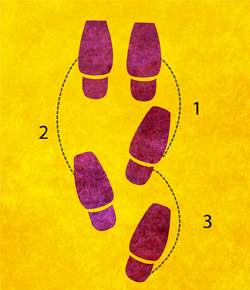 Question:I noticed that at the end of Kaddish as well as the Amidah, we take three steps back, and then say “Oseh Shalom,” a prayer for peace. It was explained to me that we step back similarly to how one would respectfully depart from a king. But why three steps? And why only afterward do we pray for peace?Reply:Indeed, the Talmud1 teaches that upon concluding the Amidah one should retreat in a respectful manner by taking three steps backward, and only afterward should one bidshalom, meaning “peace or farewell.” 2Commentaries explain that the three steps back demonstrate that we are leaving a place of holiness, as it were, and transitioning to a mundane place. Just as we would take leave of a king once our appointment is concluded, we respectfully “take leave” of G‑d after these special prayers.3 For similar reasons, we also take three steps back after Kaddish before bidding shalom.4 But the question remains: why specifically three steps? Rabbi Yosef Caro, in his commentary Beit Yosef, cites a number of explanations: The Three-Mil RetreatUpon hearing the awesome sound of G‑d giving the Torah on Mount Sinai, the Jews reacted by “retreating a distance of three mil” (a Talmudic-era measurement).5 We commemorate this sense of awe, and also take three steps backward at the end of our personal rendezvous with the divine.6Moses and the Heavenly PartitionsWhen Moses ascended Mount Sinai to be in G‑d’s presence and receive the Torah, “the mountain burned with fire up to the midst of the heavens, with darkness, a cloud and opaque darkness.”7 The Midrash explains that “darkness, a cloud and opaque darkness” refer to three heavenly partitions that Moses had to go through when he entered and when he took leave of the Divine Presence.8 Similarly, when we take leave of the Divine Presence after the Amidah, we take three steps back.9Descending the AltarOur prayers serve as a substitute for the services performed in the Holy Temple. More specifically, they correspond to the daily tamid offerings brought on the altar, after which the priest would descend the altar backward. Since there were “three strata of rock” between the altar and the ramp that the priest would descend,10 when we depart from the Divine Presence after prayer, we do so in the same fashion.11Ezekiel’s ProphecyWhen we pray, we endeavor to be like the angels. The verse in Ezekiel that describes the position of the angels states, וְרַגְלֵיהֶם רֶגֶל יְשָׁרָה, “Their legs were a straight leg.”12 In addition to this verse being the source for the halachah of placing both feet together during the Amidah,13 it is also the source for taking three steps backward, since the minimum for the plural “legs” is two, which plus the singular “leg” makes a total of three steps.14Countering Nebuchadnezzar’s StepsEarly in Nebuchadnezzar’s career, before he ultimately became king and destroyed the first Holy Temple, he served as the royal scribe of King Merodach-Baladan of Babylonia. It happened that after G‑d miraculously healed King Hezekiah of Judah, King Merodach-Baladan had a letter of greetings written up and sent to King Hezekiah. The letter, however, first mentioned greetings to King Hezekiah before mentioning G‑d. When Nebuchadnezzar, who was not there at the time, heard about it, he said that this was disrespectful to G‑d, and he ran after the messenger in order to rewrite the letter.According to the Midrash, it was in the merit of these three steps (backward15) that Nebuchadnezzar took for G‑d’s honor that he merited to become king and ultimately destroy the Holy Temple.16 Countering his three steps, we too take three respectful steps backward when taking leave of the Divine Presence. After taking three steps back, we say a short prayer for peace and a prayer for the rebuilding of the Holy Temple. We pray that, unlike Nebuchadnezzar’s steps, our steps should lead to the rebuilding of the Holy Temple.17 May it be speedily in our days!
Rabbi Yehuda Shurpin responds to questions for Chabad.org's Ask the Rabbi service.
© Copyright 2015, all rights reserved.
| ||||||||||||||||||||||||||||||||||||
Essay
| ||||||||||||||||||||||||||||||||||||
 We hold these truths to be self-evident, that all men are created equal, that they are endowed by their Creator with certain inalienable Rights, that among these are Life, Liberty and the pursuit of Happiness. That to secure these rights, Governments are instituted among men . . . —The Declaration of IndependenceThe Founding Fathers were unabashed in their assertion that it was G‑d who endowed all men with “certain inalienable rights.”1 But are human rights a divine endowment? Is there a biblical verse that promises mankind the right to life, liberty and the pursuit of happiness? No, the Torah doesn’t talk about human rights. But it certainly talks about the sanctity of human life, describing the first man and woman as being “created in the image of G‑d.”2 In Torah, all people are Are human rights a divine endowment?held accountable for their failures, king and common man alike. In fact, the leaders are often held to even higher standards than the laypeople—Moses is criticized for the smallest infraction, and kings are reproved harshly by the prophets when they act out of line. In Jewish law, the rich man and the pauper are to be treated equally before the judge. Standing by passively when someone else is being hurt is a crime. If orphans or widows cry out to G‑d because they are being mistreated, G‑d considers it a personal offense. The principles of the Enlightenment—liberty, equality and individualism—were based upon Judaic principles. In the writings of European Enlightened thinkers such as John Locke, the Hebrew Bible is cited more than all other writings combined.3 It’s not surprising that John Adams, the second president of the United States, wrote: “I will insist that the Hebrews have done more to civilize men than any other nation. If I were an atheist, and believed in blind eternal fate, I should still believe that fate had ordained the Jews to be the most essential instrument for civilizing the nations.” The American colonists felt that their entrepreneurial and political rights were being violated—a smack in the face of modern, enlightened principles—and they weren’t going to stand for it. They fought for their freedom, and once independence was won, the fledgling and idealistic American government was committed to protecting that freedom. And so America became a country of rights, not only our rights to freedom and democracy, but the right of every individual or group to defend its entitlements. From women to workers to minorities, each group vocalizes its expectations of people who are not in that group. And to be sure, tremendous social improvements have come from rights advocates. But even if the American Revolution was based on the Hebrew Bible, there is still no verse in Torah that says, “And the L‑rd said to Moses, ‘Every human being is endowed with the right to life and liberty.’” On the other hand, G‑d does say, “Thou shalt not murder”4—your neighbor has the right to live. Likewise, the Torah doesn’t say, “Ladies, these are your rights! Don’t let anyone take advantage of you.” Instead, the Torah obligates the husband to take care of his wife in ten ways, including (a) to provide her with sustenance; (b) to supply her clothing and lodging; (c) to fulfill her need for intimacy; (d) to provide the ketubah (i.e., the sum fixed for the wife by law); and (e) to procure medical attention and care if she is ill.5 Respect for animals can be inferred from our obligations towards themIn addition to the ten specific obligations, Maimonides states that “a man shall honor his wife more than his own self, and shall love her as he loves himself, and shall constantly seek to benefit her according to his means; that he shall not unduly impose his authority on her, and shall speak gently with her; that he shall be neither sad nor irritable.”6 Similarly, respect for animals can be inferred from our obligations towards them: “If you see your enemy’s donkey lying under its burden, would you refrain from helping him? You shall surely help along with him.”7 The Talmud infers from this verse that relieving the suffering of an animal is a biblical law.8 The Talmud also says that a person can’t purchase an animal unless he has the means to feed it, and a person must feed his animals before he feeds himself. Instead of reading us our rights, the Torah tells us to be respectful to others. The Jewish Constitution (the Torah) says, “You shall love your fellow as yourself.”9 Rabbi Akiva says that this is the major principle of the Torah.10 That would be comparable to the Declaration of Independence opening with “We hold these truths to be self-evident, that all men were created to treat others with love and dignity.” But it doesn’t. Because the history of rights in Europe and America arose out of a society where most people were treated as chattel, and then demanded some freedoms and rights. In Torah, on the other hand, the human being is considered innately free. The story of our nationhood begins with our liberation from slavery. With our inherent freedom once again intact, G‑d wants us to form a society, to be a nation. As a nation, a brotherhood of people, we are responsible for one another. The Jewish emphasis is on service, not rights. In summing up the purpose of our lives, the Talmud says candidly, “I was created for nothing but to serve my Master (G‑d).”11 Even the most unaffiliated Jews typically put service ahead of rights, without even realizing that they’re acting out the most essential Torah value. Jews are notorious for voting against their own class interest in order to bring about social equality.12 Jews are known to be extremely philanthropic; in 2010, five of the top six philanthropists in America were Jewish!13 Social welfare organizations are prolific in Jewish communities. Whether we admit it or not, Jewish people are famous for putting service before entitlement. On a personal level, the small shift from rights to service can make a dramatic difference in our relationships. When the focus is largely about our rights and our expectations of our partner, it’s easy to be disappointed. I’m a wife and I deserve to be supported. I’m a husband and I deserve to be fed. But when the focus is on service, it’s easier to see our part in making the relationship work. Of course, there needs to be a balance, but when the emphasis is on personal contribution, there is greater humility. A The small shift can make a dramatic difference in our relationshipsstudent of the first Chabad rebbe, Rabbi Schneur Zalman of Liadi, entered into the rebbe’s office for a private meeting. “Rebbe,” he began, “I lost much of my wealth this year. I have a family to support. There are poor people that I support. What will I do?” The man was devastated. The rebbe listened to his story and remained lost in thought for a few moments. “I hear only what you want from G‑d, but what about what G‑d wants from you?” he finally replied. Being a man of sensitivity, the student immediately fainted. He was shocked by the higher truth that the rebbe had shared, and was ashamed that he’d lost sight of it. When he awoke, the rebbe blessed him with renewed financial success, and he regained his wealth. I don’t suppose that the rebbe’s student felt a sense of entitlement. He came with a humble prayer. Even so, the rebbe reminded him that it’s natural to think about what we want from G‑d, but it’s not as natural to think about what G‑d wants from us. And when we think about what G‑d wants from us, we often find our needs being met in the process.
Rochel is a mother of four children and the co-director of Chabad of Las Olas, Fla., serving the community of young professionals. She is a high-school teacher and a freelance writer—and a frequent contributor to Chabad.org. She lectures extensively on topics of Kabbalah and feminism, and their application to everyday life. Rochel holds an MS in Brain Research from Nova SE University.
© Copyright 2015, all rights reserved.
| ||||||||||||||||||||||||||||||||||||
Parenting
| ||||||||||||||||||||||||||||||||||||
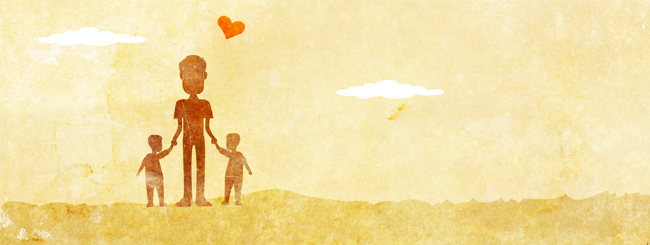
Dear David,
I’m so glad you’re managing well with your new role as a single father. I know how hard you must be working, but your involvement in your children’s lives is invaluable. Since we’re in the same boat, let me suggest some tips that I found helpful:
I hope some of these tips are helpful. Best of luck!
© Copyright 2015, all rights reserved.
| ||||||||||||||||||||||||||||||||||||
Parenting
Feeding Our Children, Part 1 | ||||||||||||||||||||||||||||||||||||

It was a chamsin, a sandstorm. For those that live in Israel, you know what I’m talking about. During a chamsin, it’s hot outside and gets pretty dark, like a yellow layer of smog has taken over the usual blue skies.
I was watching two of my neighbor’s girls and my daughter for the afternoon. Due to the heat, I immediately offered everyone ice pops. I wanted to try and balance the artificial sugar, so I cut up some fresh fruit and put it on the table. The girls enjoyed the nectarines and apples, and then I immediately offered everyone ice popswent off to play with dolls. Once they were done, the girls asked for a treat. I don’t know if they were testing my boundaries or if I was caught off guard, but I had a hard time saying, “No, we already had our snack.” I remembered we had some marshmallows, so I decided to give everyone one. Later, two more girls came by to play. As a good hostess, I offered them a treat and then, of course, offered the rest of the girls as well. The girls were happy, but I didn’t feel quite right about giving so much junk. I didn’t want to force the kids to eat healthy foods, but I didn’t want to just let them have free rein over the refrigerator, either. How could I find the healthy balance between being too strict and too indulgent? I found the answer to this question when I learned of Ellyn Satter’s1 Division of Responsibility in Feeding:
An example of such research was done by child development specialist Diane Baumrind, in which she defines three types of parenting styles: authoritarian, permissive andauthoritative. Authoritarian parents have unrealistic expectations for their children and demand immediate compliance. These parents may force their children to eat a certain food or eat everything on their plate without any regard for the children’s preferences or feelings. Children of authoritarian parents tend to be shy and nervous, and not as motivated as other children. The permissive parents set unclear boundaries or have no expectations for the children’s schedule. They do not set any limits on their children’s eating behavior or participation in family meals. Children of these parents learn from their parents’ behavior, and tend to act out aggressively and lack self-control. Finally, authoritative parents set boundaries, but are also attentive to their children’s requests and take them into consideration. These parents give love and limits, and in turn their children tend to be content with themselves and generous with their friends. The Division of Responsibility in Feeding is based on the authoritative method of parenting.3 I realize now that I was being a permissive parent. I wasn’t setting strong enough limits. I needed to set a snack time and to decide what was going to be served—of course, while still taking into consideration the kids’ preferences. I’m not going to be too harsh on myself—I know that the weather was pretty awful, and I’m glad that the girls had a good time. On the other hand, a couple of weeks later, one of the girls said to me, “If you are a nutritionist, why do you give us so many treats?” I understood from this comment that she knew she was testing my boundaries and did not need any more snacks. While children are constantly testing our boundaries, being clear about what rational limits are will help us be better parents. Here are some tips for setting good boundaries with eating:
For example, we are given the laws of keeping kosher, which tell us the types of food we can and can’t eat. G‑d does not want us to be like puppetsWe still have the ability to choose from a wide variety of products at the grocery store, a plethora of recipes to prepare, and many types of cuisines. Even with all these choices we are still within the boundaries of the Torah, which enable us to elevate the food and ourselves when we sit down for a meal. G‑d, our father in heaven, is our ultimate teacher. Just as we Jews need guidelines that allow us to make good choices, so do our children. By making a schedule of meals and snacks for your children and setting a menu with options they can choose from, you are giving them the ability to make good choices. You are being an authoritative parent, just as G‑d is with every Jew. You are incorporating the wisdom of the Torah and implementing it into your daily life.
Aliza has a bachelor’s degree in Clinical Nutrition from the University of California, Davis, and a master’s degree in Public Health from Ben Gurion University. She recently finished a course in nutrition education and counseling through the Ellyn Satter Institute. She lives in the northern Negev of Israel with her family.
© Copyright 2015, all rights reserved.
| ||||||||||||||||||||||||||||||||||||
Parshah
| ||||||||||||||||||||||||||||||||||||
 AccompanimentAbraham “planted an eshel,”1 which can be translated as an inn.2 Eshel is an acronym for three Hebrew words: achilah, “eating”; shetiyah, “drinking”; and levayah, “accompaniment.” Abraham’s inn was unique. He offered food and drink like any other inn. In addition, he offered a somewhat unusual service. He accompanied each of his guests part of their way.On the surface, accompaniment seems a less important benefit than food and drink. The traveler is hungry and wants a square meal. Accompaniment is not as critical to the traveler, who journeyed to this point without assistance and is perfectly capable of continuing without company. But on a deeper level, accompaniment is a most important element. A weary traveler thirsts on two separate levels: the body hungers for food; the soul hungers for warmth, acceptance and camaraderie. When travelers leave your home, the warm cheer and soothing comfort of your hospitality fade quickly as the daunting specter of loneliness dawns again. When you accompany your guests, you assure them that they aren’t traveling alone. You communicate that though you are parting in body, you will not part in spirit. They will know that someone back there will think of them, worry for them and pray for their welfare. That is a nurturing thought. The Final JourneyThe Torah doesn’t say that Abraham built an inn, but that he planted an inn. The strange terminology hints at a deep message that Abraham sought to implant in the hearts of his guests.Our sages teach that Abraham not only fed his guests with physical food, but he nourished them with food for thought. When they concluded their meal, he implored them to thank G‑d rather than their host. Building on this concept, Rabbi Yisrael of Modzitz suggests that by accompanying them, Abraham sought to impart a lasting lesson as well. Most of our day is spent on providing for ourselves and our families. Occasionally we make time for holy endeavors such as Torah study, ritual traditions, and acts of goodness and kindness. When we embark on our final journey, the items for which we toiled so mightily, the house and furniture, the savings and bonds, don’t come with us. Only things of lasting value accompany us: the mitzvahs that we did, the charity that we gave, the time that we spent in the study of G‑d’s Torah. When Abraham accompanied his guests, he would teach them about the eventual final journey. He would thank them for giving him the opportunity to fulfill the mitzvah of hospitality, a lasting gift which would fortify him and accompany him on his final journey. He would appeal to them to fill their lives with the same kind of gifts. The food that we eat nurtures us for a day and must be replenished tomorrow. Our garments wear out and must eventually be replaced. Once we spend our money, it is gone. But the food, clothes and money that we give to others remain with us forever. On the final journey, there are only so many types of luggage that we are permitted to take along. The wise person accumulates more of what can be taken along than of what must be left behind. GardeningThe other day, I met two people assessing the gardens at our synagogue. Not knowing much about gardening, I asked them what type of work is required in the fall. They replied that fall is the season to transplant and to trim. Some plants, they explained, grow quickly and crowd out the slower-growing plants. They need to be trimmed back to make space for their slower-growing counterparts.I realized that we always read about Abraham’s inn during the fall. Now is the season to trim back and transplant the shallow endeavors that crowd out the more important things in life. The immediate need for more and for better, the desire for fancier and for more expensive, consumes so much of our time and energy that it crowds out the important endeavors of Torah, mitzvahs, goodness and kindness. Now is the time to consider whether we have allowed the least important parts of life to take up the most space. If we have, then this is the perfect time to correct it. Three FriendsAn old parable teaches us about three types of friends. The first doesn’t even accompany us on the journey; the second accompanies us for part of the journey and then takes his leave. The third stays with us the entire way.The first friend is the possessions that we accumulate over a lifetime, which don’t even come to the funeral. The second friend is our family and social circle, who come only until the grave, and at that crossroads must bid us farewell. It is only the third friend, the good deeds that we accumulate over the course of a lifetime, that stays with us for the entire journey. Life in this world is temporal. Life in the world to come is eternal. The wise person invests in eternity.
Rabbi Lazer Gurkow is spiritual leader of Congregation Beth Tefilah in London, Ontario, and a frequent contributor to The Judaism Website—Chabad.org. He has lectured extensively on a variety of Jewish topics, and his articles have appeared in many print and online publications. For more on Rabbi Gurkow and his writings, visit InnerStream.ca.
© Copyright 2015, all rights reserved.
| ||||||||||||||||||||||||||||||||||||
Parshah
| ||||||||||||||||||||||||||||||||||||
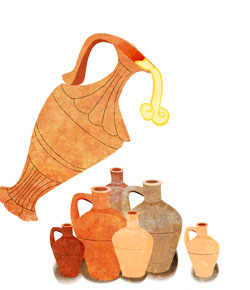
A woman, the wife of one of the prophets, cried out to Elisha: “My husband, your servant, has died . . . and the creditor has come to take my two sons as slaves.”
Said Elisha to her: “. . . Tell me, what have you in your home?” And she answered: “Your maidservant has nothing in the house but a cruse of oil.” Said [Elisha]: “Go, borrow vessels . . . from all your neighbors; empty vessels, only that they not be few. . . . And pour [of your oil] into these vessels . . .” (II Kings 4:1–4; from the haftorah for Parshat Vayeira) I want to paint a picture. I don’t have any specific ideas, but I want to paint. I want to write a story. I don’t know what to write, but I feel that I must. So I stand at my easel, canvas, oils and brushes at the ready. Or I sit before my computer and gaze at the screen. Once upon a time . . . I type a few words. And suddenly a stream. Then a river. A torrent of words rushing from somewhere deep within me. Inspiration. I unzip the velvet bag that holds my tefillin, remove the black leather box and bind it to my arm. I reach into my pocket, dig out a coin and insert it into the slot of the charity box. My movements are sluggish. A thousand times I have done this. Thousands more I will. My actions seem forced and automatic. I do these things because G‑d has commanded me to, because I recognize that this constitutes my mission and purpose in life. But the experience feels meaningless. I am not a robot. I feel things, sometimes deeply. I feel hurt, anger, love and elation. But I do not feel like putting on tefillin. In the fourth chapter of the second book of Kings, we read of the “miracle of the cruse of oil” performed by the prophet Elisha. An impoverished widow sought the help of Elisha, crying that her debtors are about to take her two children as slaves, and all she possesses is a single cruse of oil. The prophet tells her to borrow as many empty vessels as she can, and to proceed to fill them with oil from her cruse. Miraculously, the oil keeps on flowing as long as there are vessels to receive it. Chassidic teaching explains the deeper significance of the widow’s quandary and Elisha’s advice: A woman, the wife of one of the prophets, cried out to Elisha—The soul of fire1 calls out to G‑d: “My husband, your servant, has died . . .”—My service of You is lifeless, devoid of inspiration. I yearn to fill my deeds with meaning and significance . . . “. . . and the creditor has come to take my two sons as slaves”—but my animalistic inclinations are monopolizing my emotions. They want me to love the present and revere the temporal. They cloud my vision of Your all-pervading, eternal truth. Said Elisha to her: “What do you have in your home?”—G‑d answers, “What is left of your soul that it can call its own?” And she answered: “Your maidservant has nothing in the house, save a small cruse of oil.”—“Nothing but the pristine essence of my soul, the ‘small cruse of oil’ at her core that remains forever unsullied by the mundanities of life.” Said [Elisha]: “Borrow vessels from your neighbors; empty vessels, only that they not be few . . .”—Act. Continue to do positive and G‑dly deeds, many positive and G‑dly deeds, even if they seem “borrowed” and empty to you. Remember, deeds are vessels, ready recipients for content and fulfillment . . . “. . . and pour [of your oil] into these vessels . . .”—The more vessels you acquire, the more your “oil” will flow from its source and fill your actions with meaning and significance. Without the vessel of deed, there is nothing to provoke the oil of inspiration. Ultimately, if you persist in doing what you know to be just and right, your divine essence will fill your every “empty vessel.”
Illustration by Chassidic artist Michoel Muchnik; click here to view or purchase Mr. Muchnik's art.
© Copyright 2015, all rights reserved.
| ||||||||||||||||||||||||||||||||||||

Why ISIS Has Nothing on Abraham
What is so special about Avraham’s self-sacrifice for G-d, considering that we find many who were willing to give up their life for all types of causes?
By Chony Milecki and Benny Friedman
 Watch (1:46)
Watch (1:46)<script language="javascript" type="text/javascript" src="http://embed.chabad.org/multimedia/mediaplayer/embedded/embed.js.asp?aid=2753109&width=auto&height=auto"></script><span style="clear:both;" class="lb" id="lbdiv">Visit <a href="http://www.chabad.org/multimedia/default_cdo/aid/591213/jewish/Video.htm">Jewish.TV</a> for more <a href="http://www.chabad.org/multimedia/default_cdo/aid/591213/jewish/Video.htm">Jewish videos</a>.</span>
More in Video:
• Compassionate, Bashful, Benevolent (By Moishe New)
<script language="javascript" type="text/javascript" src="http://embed.chabad.org/multimedia/mediaplayer/embedded/embed.js.asp?aid=2357387&width=auto&height=auto"></script><span style="clear:both;" class="lb" id="lbdiv">Visit <a href="http://www.chabad.org/multimedia/default_cdo/aid/591213/jewish/Video.htm">Jewish.TV</a> for more <a href="http://www.chabad.org/multimedia/default_cdo/aid/591213/jewish/Video.htm">Jewish videos</a>.</span>
Story
| ||||||

To the town of Shchedrin there arrived a messenger, sent by the leading rabbis of the day, to raise money for a worthy cause. A meeting was convened by the town’s elders to discuss how to aid the guest in his holy mission.
At the meeting it was suggested that the messenger be accompanied in his door-to-door visits by a respected member of the community. This way, those who would give only grudgingly to a stranger might be more generous in the presence of someone they knew and respected. All faces naturally turned to Reb Peretz the mill-owner, who neatly fitted the bill: learned, pious and wealthy, he was by far the most prestigious burgher in the room. Reb Peretz, however, was not quite as enthusiastic. “Listen,” he finally said, “I was thinking: how much will we collect by knocking on the door of every small-time shopkeeper and wagon-driver? I know this town. I estimate that we will raise, at most, eighteen silver rubles. I’ll tell you what—I’m ready to contribute the eighteen rubles myself, if you’ll exempt me from this ‘honor’ . . .” Present at the meeting was the town’s rabbi, Rabbi Shaul DovBer Zislin. At this point, Rabbi Shaul DovBer interrupted. “Reb Peretz,” he said, “you just explained something that was puzzling me all evening. I was wondering: why was this meeting called? Surely the dear Jews of Shchedrin are charitable souls, who will give whatever they can to a worthy cause. Why didn’t the messenger simply go about his rounds, raising the money? “I’ll tell you why. When our friend came to town, the yetzer hara (evil inclination) was frantic. Hundreds of mitzvot were about to be performed in Shchedrin! Never mind the eighteen rubles that will be raised—considering the sums of money that the yetzer hara deals with, this is a mere pittance. But the mitzvot! Yankel the water-carrier, Shepsel the innkeeper, Mina the laundress, and hundreds of others, are going to joyfully give their hard-earned pennies to aid their brethren in distress. What work awaited the yetzer hara! He must now finagle his way into the heart of each of Shchedrin’s precious Jews and seek to dampen their generosity, to convince them to reduce their contribution or to refuse the messenger altogether, G‑d forbid. “Then the yetzer hara had an idea. Call a meeting! Yes—call a meeting of Shchedrin’s influential householders, a meeting to aid the messenger in his holy mission. At this meeting, it will inevitably be suggested that Reb Peretz accompany the messenger to stimulate an even more generous response. Now, the yetzer hara’s job will be much, much easier—all he has to do is to convince Reb Peretz to give the eighteen rubles himself . . .”
Yanki Tauber is content editor of Chabad.org.
© Copyright 2015, all rights reserved.
| ||||||
Women
| ||||||

Who hasn’t been thrown off balance by a difficult person? The perpetrator could be virtually anyone—a spouse, relative, friend, coworker or boss.
Which reminds me of what Rabbi Joseph Richards said: “People are annoying. So find the person who annoys you the least, and marry that one!” So how do we deal with these It’s easy to lash back in angerdifficult people in our lives? It’s easy to lash back in anger or defensiveness when a person acts nasty or tries to manipulate us, thinking we’re showing strength. But really, we are being weak by succumbing to an impulse to get even. Retaliating or trying to justify ourselves is, in effect, fanning the flames of toxicity, enabling the person to continue his or her difficult behavior. A wiser thing to do is to apply this teaching from the Jewish sage Ben Zoma: “Who is strong? He who subdues his personal inclination, as it is said:1 ‘He who is slow to anger is better than a strong man, and a master of his passions is better than a conqueror of a city.’”2 Subduing our impulse to respond in kind to difficult behaviors does not mean enabling another person to behave poorly. It means learning to respond in a way that is respectful to both ourselves and the other person. To move from simply feeling annoyed by a difficult person to responding constructively, it helps to understand the likely underlying reasons for the troublesome behavior. Here’s how to do this, using guilt-trippers, scorekeepers and blamers as examples of difficult behaviors: The Guilt-TripperInstead of expressing his or her wants and feelings directly, the guilt-tripper makes others feel guilty.Example: “Go ahead and watch TV while I do the dishes and then put the kids to bed. I feel a migraine coming on, but I’ll manage. And I still have to get up early tomorrow to finish that project at work.” Sigh. Underlying Reason: Guilt-trippers lack self-esteem. Consequently, they don’t feel worthy of asking directly for what they want. They may act like a martyr, hoping the other person will get the hint. When that doesn’t happen, they become resentful or depressed. Solution: Encourage guilt-trippers to express themselves clearly. Ask the other person, “Do you want me to help more? Please say specifically what you want. You can ask me for anything. I might not give you the moon, but if you ask me to do something simple, I’ll probably say, ‘Fine.’” The ScorekeeperThe scorekeeper says nothing when upset, but keeps track of each incident, and eventually lets it all out at once.Example: “I was expecting you to call an hour ago to say you’d be late for dinner. I should have known you wouldn’t call, because you didn’t call when you were over an hour late last Tuesday and three other times last month. And that time two years ago . . .” Underlying Reason: Scorekeepers feel uncomfortable about making waves by complaining. Eventually, like a volcano, pressure accumulates and they spew out what’s been building up. Solution: Apologize for your part in causing discomfort. Say you prefer to hear what’s bothering the person each time, rather than have resentments accumulate. The BlamerThe blamer accuses others of being inadequate, using you-statements and name-calling, such as “You’re a jerk (or a slob, or stupid).”Underlying Reason: Blamers lack self-esteem and feel unsafe expressing themselves with I-statements, such as “I’m disappointed (or frustrated, or feel disrespected) by your lateness.” They’re more likely to say, “You’re always late,” or “You’re rude.” Insecure people who feel inferior to their partners or fear being abandoned might unconsciously resort to blaming or putting down others, hoping to erode their partners’ self-esteem to the point that they won’t think they can find a better mate. Solution: Compose yourself with a couple of deep breaths, so you won’t respond impulsively. Try to be objective. Ask yourself, “Am I at fault?” Either way, respond calmly and respectfully: “Yes, I often run late, and I hear this bothers you. It’s my problem; I try to do just one more thing before I leave. I don’t mean to be disrespectful.” If you realize you’re being falsely accused, state your disagreement calmly. If you’re being unjustly accused of lying, for example, say, “I’m actually careful to be truthful.” You can also politely ask the person to give an example of what he or she is accusing you. As Eleanor Roosevelt said, “No one can make you feel inferior without your consent.” Compassion and Common SenseThese are three kinds of difficult behaviors. If you’re on the receiving end of any of them, use common sense. If you can muster up compassion for someone who is being difficult, the person will sense this and feel less of a need to project his or her insecurities on you. You can also become part of the solution by using positive communication techniques.In any case, do not trap yourself into staying in a toxic situation. You can become part of the solutionIf the behavior continues despite your efforts to defuse it, be willing to walk away graciously, at least momentarily. Remember: We cannot change another person’s behavior; we can only change our own. As Ben Zoma’s teaching implies, by exercising self-control when faced with someone who is being difficult, we show true strength of character. When we can feel compassion for the other in our heart, we convey a sense that we’re all in this together, each with our own challenges, which are all opportunities for personal growth. By responding sensitively to a difficult person, we foster our own wellbeing and the wellbeing of the other person.
Marcia Naomi Berger, MSW, LCSW, author of Marriage Meetings for Lasting Love: 30 Minutes a Week to the Relationship You’ve Always Wanted, is a psychotherapist, speaker, and marriage and relationships educator.
© Copyright 2015, all rights reserved.
| ||||||
Women
| ||||||

Dear reader,
I love this time of year. The leaves are turning luxuriant autumn shades; my favorites are the rich, deep mahoganies, auburns and burgundies. There is glorious color everywhere. In the spring, flowers brighten our world with their brilliant, vivid primary colors. They make me think of bright-eyed children, enveloped in a joie de vivre. They face their days with daring, colorful enthusiasm and flamboyant joy. But the fall’s aging leaves, the mustard yellows and burnt orange, clinging to life with their last breath, mesmerize me. These leaves are like a mature individual, made wise by his shades of life experiences. Their deeper colors symbolize a fuller perspective of hues and a more multidimensional perception of our world—and of our relationship with our Creator. Each of us, too, has personal moments of glory when we’re in full bloom, admired by those around us. But these moments too wither, as the wheel of life turns and our moments of accomplishment fade. Lately, these glorious leaves have been arriving at their final destination—with their final descent to the ground. The trees, soon to be bared, remind me of the celebratory cycle of life, and how quickly love and birth changes seasons into loss and heartbreak. Yet the fading trees outside my window also seem to be whispering an inspiring message. The small sapling that was so weak and hapless that it could almost be blown about by the raging winter winds has grown taller, thicker. Its branches now reach up to the heavens; its roots have taken a firm grip in the earth. Though its leaves have fallen away throughout each of the seasons, its core has developed and matured. Through the passage of time, each of us, too—and our nation as a whole—develops into a stronger being, with a surer sense of who we are and deeper convictions. Over the last few weeks, as the Jewish people, we’ve experienced too much loss and heartbreak. Hopelessly, we’ve watched the precious lives of our brothers and sisters being smothered to death with guns and knives, murdered by those who hate us. And yet, even as precious, beautiful leaves are ripped away from our tall tree by these winds of hate, the tree of our nation, the Jewish people, continues to grow stronger, our roots extending ever deeper. There are those who think they can break us or destroy us. They take away from us our best and greatest, our most colorful and beautiful. But they do not understand that the Jewish tree “is a tree of life for those who grasp it.” Am Yisroel Chai! Let us pray and resolve to do extra mitzvot for the safety of our brethren. But as we do, let us remember that the tree of the Jewish people is alive, its roots are strong and resilient, and its branches continue to reach ever higher. Chana Weisberg, Editor, TJW
Chana Weisberg is the editor of TheJewishWoman.org. She lectures internationally on issues relating to women, relationships, meaning, self-esteem and the Jewish soul. She is the author of five popular books.
© Copyright 2015, all rights reserved.
| ||||||
Lifestyle
| ||||||
It’s apple season, which means it’s prime time for all kinds of apple desserts, like this apple pie.
 I used sweet red apples, but if you prefer a more tart apple pie, you can definitely use green ones. Because we’re using a premade crust, that definitely cuts down on the prep time. 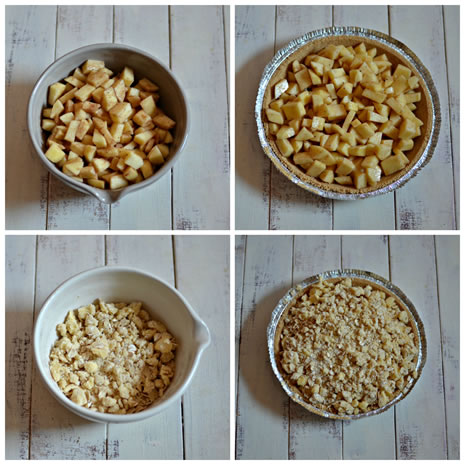 You’ll need to peel and dice the apples and toss them with the sugar, spices and lemon juice. That goes into the pie crust, and gets topped with the crumble mixture. While that’s baking, you can make the strawberry sauce. I find the strawberry sauce gives this dessert a refreshing kick, but if you prefer, a sticky caramel sauce would also be delicious. Pie Ingredients:
Crumb Topping Ingredients:
Strawberry Sauce Ingredients:
Directions:
 What’s your favorite apple dessert?
Miriam Szokovski is the author of the historical novel Exiled Down Under, and a member of the Chabad.org editorial team. She enjoys tinkering with recipes, and teaches cooking classes to young children. Miriam shares her love of cooking, baking and food photography on Chabad.org’s food blog, Cook It Kosher, and in the N’shei Chabad Newsletter.
© Copyright 2015, all rights reserved.
| ||||||
Lifestyle
| ||||||

Natalia Kadish is a Surrealist artist inspired by the joy received from learning Torah and contemplating the infinite. She received a BA in Illustration from School of Visual Arts. Her art has been displayed in several concerts, including Irving Plaza in NYC. While incorporating the realism of her father, Laszlo Kubinyi’s, illustrations, she explores mystical concepts and understandings inspired by her visit to the Artists’ Colony in Tzfat, Israel. Her goal is to reveal the love in hearts and share her inspiration with all.
© Copyright 2015, all rights reserved.
| ||||||
Lifestyle
| ||||||
This dish comprises two dips that one can eat with breads, as a reminder of the breads that Sarah and Abraham offered the three strangers (angels) who entered their tent.
In this parsha, Hagar is sent away with Ishmael. He is Isaac’s half brother and they share Abraham as their father. This dish is made with the same ingredients in different colors to represent the connection of the brothers, and is sprinkled with sesame seeds, symbolizing their shared father. It is surrounded by greens that stand for the bush that Ishmael was left under by Hagar, and the thicket where the ram was caught and used on the altar instead of Isaac. The greens are like a family or community that stands in a circle to support and empower the most vulnerable, rather than leaving them behind like Sodom and Gomorrah.  Ingredients
Directions:
Reprinted with permission from Neesh Noosh.
Sarah Newman writes Neesh Noosh—a Jewish woman’s year-long journey to find faith in food. She creates weekly recipes inspired by the Parshah and what’s in season at her local farmers’ markets.
© Copyright 2015, all rights reserved.
| ||||||
Jewish News
| ||||||
Since the April 25 earthquake and the ensuing tremors that devastated of Nepal, some villagers have rebuilt their feeble mud homes, only to see them washed away by mudslides that plague the South Asian nation.
But help may be on the way in the form of ready-made homes now being made in Israel. “In the weeks and months following the quake, we gave out approximately 1,000 [sturdy, waterproof] tents to families in need,” says Rabbi Chezky Lifshitz, who co-directs Chabad of Nepal in Kathmandu with his wife, Chani, “and we’ve now moved on to helping people rebuild their homes in places determined to be safe. But for people living on steep inclines, we realize that to build their mud homes would be futile since there is no way they can remain steady.” 
Modeled after typical Nepali homes, each house measures 32 square meters (350 square feet).
To alleviate the situation, the rabbi partnered with an Israeli firm, Best Trail, to design metal frames for houses that can then be finished using local building materials, including the plentiful mud that has been used by impoverished villagers for generations. The structures are specially designed to withstand earthquakes, monsoons and other inclement weather. Modeled after typical Nepali homes, each house measures 32 square meters (350 square feet). Since many of the homes are expected to be positioned in remote areas inaccessible by roads, each kit comes disassembled in pieces no larger than 1.5 meters, which can be carried by hand and assembled on the spot. The frames—which cost $1,500 each to produce, but will be distributed free of charge—are designed to accommodate running water and electricity, something that many Nepali homes do not have. The rabbi says the first cohort of 30 homes, which will serve as a feasibility test for subsequent ones, has been produced in Israel. “If those go well and we have the funds,” he says, “we hope to be able to make even more and more of these homes, giving people a safe, permanent place to live—even better than before.” To help with the still-ongoing earthquake relief effort, visit the special relief fund page: www.Chabad.org/Nepal. 
The first cohort of 30 homes, which will serve as a feasibility test for subsequent ones, has been produced in Israel. The frames are designed to accommodate running water and electricity, something that many Nepali homes do not have.
© Copyright 2015, all rights reserved.
| ||||||
Jewish News
| ||||||
Living Jewishly deep in the Amazon jungle has its fair share of challenges, acknowledges Tatiana Azulay, whose husband, Dr. Rafael Azulay, practices medicine in Manaus, Brazil, the incongruous pocket of old Europe surrounded by thick rainforest.
“There’s no kosher grocery, no Jewish day school and not too many Jewish toddlers for my almost 2-year-old to socialize with,” says the São Paolo native, who followed her Manaus-born husband to his hometown around two years ago. “But the Raichmans do an amazing job at making Judaism easier, meaningful and exciting for our small community,” she says, referring to Rabbi Arieh and Dvorah Lea Raichman, co-directors of Chabad-Lubavitch of Manaus since 2009. Yet one area of Jewish life that has remained challenging is mikvah, the married woman’s monthly immersion in a pool of naturally collected water that is the bedrock of Jewish family life. For much of the community’s history—stretching back to the late 19th-century rubber boom—they functioned without a specially constructed mikvah. “We were told that people used the Amazon River,” says Dvorah Lea Raichman, “but that’s not practical for a number of reasons. First of all, the only time to get any privacy is at night, and some stretches of the river are shared with black caimans, snakes, piranhas and other unfriendly surprises.” 
Black caimans and other dangers lurk in the Amazon River, making it unfeasible for immersion. (Photo: Leonardo C. Fleck, Wikimedia Commons)
Azulay says the rabbi periodically takes a boat out to the river to immerse new food vessels, as mandated by halachah, Jewish law. While she appreciates his efforts, she feels that the community would benefit from a proper mikvah, which would free them from troubling him every time they purchase a new pot. ‘The Beauty of Observance’In recent years, Raichman says that a small nucleus of observant couples have coalesced around the Chabad center, making the need for the mikvah more acute. “Right now, some women fly to São Paulo, which takes four hours, or Belem, which is a two-hour flight—or five-day boat ride—each way,” she reports. “But the time has come for us to have a halachically acceptable, palatable option right here in Manaus.”
The rabbi periodically takes a boat out to the river to immerse new food vessels, as mandated by Jewish law. A mikvah would make the process much easier.
“I’m sure that even more women would be interested in going to the mikvah if it would be easier,” says Azulay. “Dvorah has been teaching women so much about the beauty of Jewish life and observance. Many people have made changes in their lives—from keeping kosher to not driving on Shabbat or Jewish holidays—and I am sure that mikvah would be more attractive if we could have a local one that does not involve snakes.” In order to accommodate the growing need, the Raichmans have recently begun a campaign to construct a beautiful mikvah for the Manaus’s locals and tourists. A generous donor has already stepped up to sponsor its construction, leaving the rabbi and his wife to raise funds for and locate a suitable piece of land for its development. “Mikvah is the mainstay of Jewish life,” asserts Dvorah Lea Raichman, “and we are looking forward to bringing this important function to the depths of the Amazon.”
© Copyright 2015, all rights reserved.
| ||||||
Jewish News
| ||||||
Rabbi Shmuel Kaplan, chief Chabad-Lubavitch emissary to Maryland, has been airing a weekly program on Jewish.tv—titled “Discussions on Prayer” —since last December. His loyal and growing audience recently celebrated a significant milestone in such a relatively short time: The 100,000th class has now been attended online.
The rabbi, who is based in Baltimore, shares his personal reflections on prayer and what he aims to accomplish through the series. Q: How did you first become interested in the art of prayer? A: As a child learning at Lubavitch World Headquarters in Brooklyn—which we call 770—I remember observing Rabbi Uziel the Shochet [Chazanov]. He would pray with the yeshivah students. Standing in the center of the shul and speaking aloud, he would pronounce every word clearly and carefully. Every word was a word, deliberate and meaningful. Another powerful memory was Rabbi Mordechai Groner, an elder Chassid who was raised in the Holy Land. One Rosh Hashanah, I sat next to him and observed him. He sat down to pray and began to cry. He didn’t stop crying until the very end. This touched me. It told me that there is more to prayer than just the mechanical repetition of words. Throughout the years, I have merited to see many other Chassidim of the previous generation praying at length—baavodah in the Chabad parlance—and I realized that this is not something that just happens by itself. It’s clearly an art that is developed and perfected. 
“When we pray, we need to focus on what we are saying and appreciate what it is saying to us,” instructs Kaplan. Above, Chassidic artist Hendel Liberman depicts Rabbi Yisroel Neveler (Levine) deep in prayer.
When I was sent by the Rebbe [Rabbi Menachem M. Schneerson, of righteous memory] to Australia in 1969, I myself began to put more effort into my prayers, slowing down my pace, thinking about what I was saying, and praying with a bit more feeling and mindfulness. The Rebbe would quote the Talmudic statement that during prayer, one stands as a servant before a king. Accordingly, the Rebbe said, it’s crucial to clear the mind of all other thoughts, even thoughts about helping others and spreading Jewish awareness and observance. It’s a time of intense inward focus. The Rebbe also stressed that praying baavodah is not just something for an elite few, but something that is attainable and necessary for each and every Jewish person. Q: What do you expect the video series to accomplish? A: We live in a time when most people have lost the art of prayer. People know you come to shul and get out as quick as you can. Where I live in Maryland, we have a horse race—part of the Triple Crown—called the Preakness. I once mentioned that we need to learn from the Preakness how not to pray. The horse is running through the race thinking how soon he can get to the finish line. When we pray, we need to focus on what we are saying and appreciate what it is saying to us. Hebrew is not like English. English is rich with words, and there is a word to express every thought or nuance. Hebrew has far fewer words. Thus, each one is laden with much more meaning, and has multiple shades and layers of significance that can be unpacked and appreciated. On the surface, it may be inscrutable. So when people read words and do not have the foggiest idea what they’re reading, they just think about getting to the end. So the first step is actually to learn what we are saying at any given time of the services. Then, there is a need to understand the structure, how the service is built and how it progresses, and what each piece adds to the whole. Once you have some of that, it is possible to pray seriously since you are able to be engaged. I have used the analogy of a walk through an elaborate botanical garden. You walk along and take in the delightful sights and aromas. However, every once in a while you also stop to inspect a particular flower or garden bed, and then just stand there and bask in its beauty. And so it should also be with davening. 
“Siddur Illuminated by Chassidus”
A: As the name suggests, the siddur specifically adds the Chassidic approach and interpretation of the prayers—and there is nary a Chassidic discourse that does not contain a commentary on prayer. The video series, on the other hand, is one step more basic. It goes through each of the prayers, explaining the meaning and significance of every piece in a more classical sense. Of course, there is Chassidic teaching there as well, but it’s one facet among many. I like to say that the class is a potpourri culled from several dozen commentaries on prayer that I’ve collected. Q: Is there a specific commentary that has influenced you more than others? A: There are really so many. From the classic Abudraham from the 14th century to the Maharal in the 16th century to Rabbi Yaakov Emden from the 18th century—and really so many others—every commentary adds something and has left a unique mark on my approach. Q: Do you have a message for readers? A: Sure! Reading about prayer is nice, but you need to actually start praying, so buy the book, join the video classes and see how you can make your prayer into a meaningful experience. Q: Who is all of this geared to—seasoned worshippers or those just starting out? A: Beginners who have a familiarity with prayer can gain from them, though no prior knowledge is really necessary. On the other end of the spectrum, there is a fellow in my shul—he has his semichahand told me that has listened to every video. It’s for anyone who wants to learn how to pray. 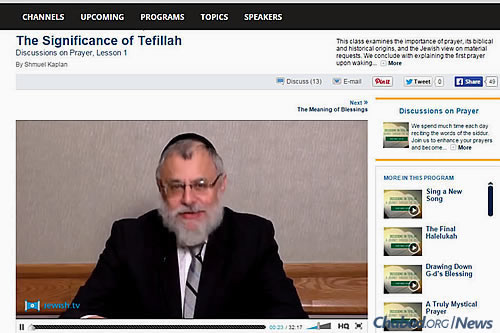
The online video classes aim to make prayer more meaningful for worshippers. (Photo: JEM)
© Copyright 2015, all rights reserved.
| ||||||
Chabad.org Magazine - Editor: Yanki Tauber
____________________________
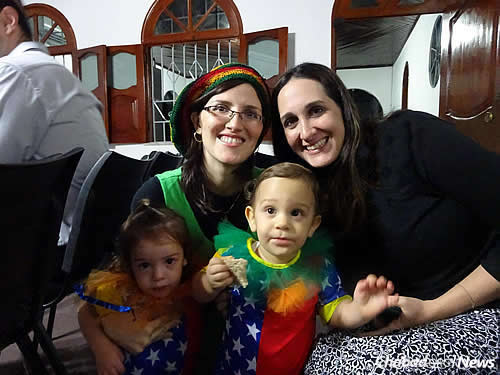

No comments:
Post a Comment